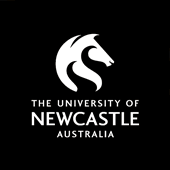1.2 Reverend Handt's Journals - Annotations
- Major Donald McPherson, 39th Regiment, formerly Commandant at Bathurst (see WellPro Directory). [Return to page 45]
- Robert Dawson, The Present State of Australia. A Description of the Country, Its Advantages and Prospects with Reference to Emigration and a Particular Account of its Aboriginal Inhabitants, London : Smith, Elder, 1830. Dawson was chief agent of the Australian Agricultural Company until 1828. [Return to page 50]
- The settler William Lane of `Tarranah Farm', Fish River near Bathurst (see WellPro Directory). [Return to page 51]
- In 1832 the children of William and Catherine Lane were Mary and John Tom Lane, twelve and ten years of age, and the infants James Barrett, born at Bathurst in 1830, and Nicholas Oliver, six months old. (see WellPro Directory). [Return to page 52]
- Probably the emancipist, William Smith, who arrived in the colony on the Agamemnon in 1820. He was an overseer for Hassall at Bathurst from around 1828, after gaining his Ticket of Leave. He is described elsewhere in the Wellington Valley mission papers as "a pious man". [Return to page 52]
- Possibly Lampetar Farm, on the Fish River, O’Connell Plains, near Bathurst, owned by Reverend Thomas Hassall. [Return to page 53]
- ie. O’Connell Plains, named after Lt Col Maurice O’Connell, 73rd Regiment. The area was located by George Evans in December 1813. [Return to page 54]
- Reverend John Espy Kean and his wife, Mary (see WellPro Directory). [Return to page 54]
- Identified in the Watson Journals as Mr Williams, the overseer of Lane's estate at Summer Hill . [Return to page 56]
- The emancipist Charles Booth of “Kyong”, Lewis Ponds (see WellPro Directory). [Return to page 56]
- Summer Hill is 3-4 km west of the present site of Orange. [Return to page 56]
- “Bial”, another word from the generic lingua franca or contact language. See for example, Joseph Mason (c1838), “bale means no but often sounds singular as used with there broken English”, Kent and Townsend (eds), Joseph Mason, 132. [Return to page 57]
- Murrumbidgerie station, established in 1825 for George.T. Palmer of Pemberton Grange (Parramatta). Palmer was the son of a former NSW Commissary General, and was briefly a superintendent of government stock under Governor Macquarie. ADB, s.v. “George Thomas Palmer”, by M. Steven, 2: 308-9. In the late 1830s, Murrumbidgerie station was held under license by William Odel Raymond, under the superintendence of William Piggins, with 9,000 sheep and 15 acres of wheat in 1839. Commissioner of Crown Lands, Itineraries and Returns, SRNSW x814. [Return to page 68]
- Could be Lt Vicars Jacob (free settler per Medway 1822), formerly of the East India Company, merchant in Sydney in 1820s and owner of Luskintyre estate in the Hunter Valley. [Return to page 71]
- ie. Neurea (Wellington Valley, NSW). [Return to page 73]
- Their son was named William Handt. He married Johanna Eleanore Muller in 1863. [Return to page 88]
- John Betts, free settler and Bathurst landowner, husband of Mary Marsden. (see WellPro Directory). [Return to page 96]
- Dixon, Native Tribes, p.303 notes that among the southern Wiradjuri, a Headman (rather than an old man) is called Bidja-bidja. `The Bidja-bidja was always a medicine man’. [Return to page 101]
- Lieutenant-Colonel Henry Despard, 17th Regiment, Commandant at Parramatta, June 1833 - June 1834. One of the other officers was Lieutenant John Darley, 17th Regiment, who was then stationed at Goulburn as Commanding Officer of the Mounted Police, 2nd Division (Argyle and Southern Counties). [Return to page 101]
- Watson objected to Handt’s departure and complained to the Sydney CMS. Watson to Hill, 8 November 1833, CMS CN/O5(a). The Sydney CMS responded by forbidding either missionary from absenting himself from the mission on private business without the approval of the Sydney Committee. Hill to Watson and Handt, 8 January 1834, CMS CN/O5(a). [Return to page 111]
- Handt gave the same account of this incident, virtually word for word, in a letter to the Sydney Committee dated March 1834. Handt to Hill, March 1834, CMS CN/O5(a). [Return to page 122]
- The man was identified elsewhere as “Dixon”. Watson Journal, 10 June 1834; Handt to Hill, 8 July 1834, CMS CN/O5(a). See also Watson Journal, 26 May 1834. [Return to page 125]
- Possibly Dr Samuel Curtis, an important local pioneer-settler who arrived in the region about this time. (see WellPro Directory). [Return to page 127]
- Their daughter was Sarah Handt (1834-1847). [Return to page 133]
- The taphoglph or incised tree is a distinctive culture feature of the Wiradjuri and has been used to determine the extent of Wiradjuri country. [Return to page 203]
- Nanima station, owned by J.B. Montefiores, under the superintendence of Dr Samuel Curtis [Return to page 217]
- Last Updated: Friday, 5 September 2014 4:13 PM AEST

